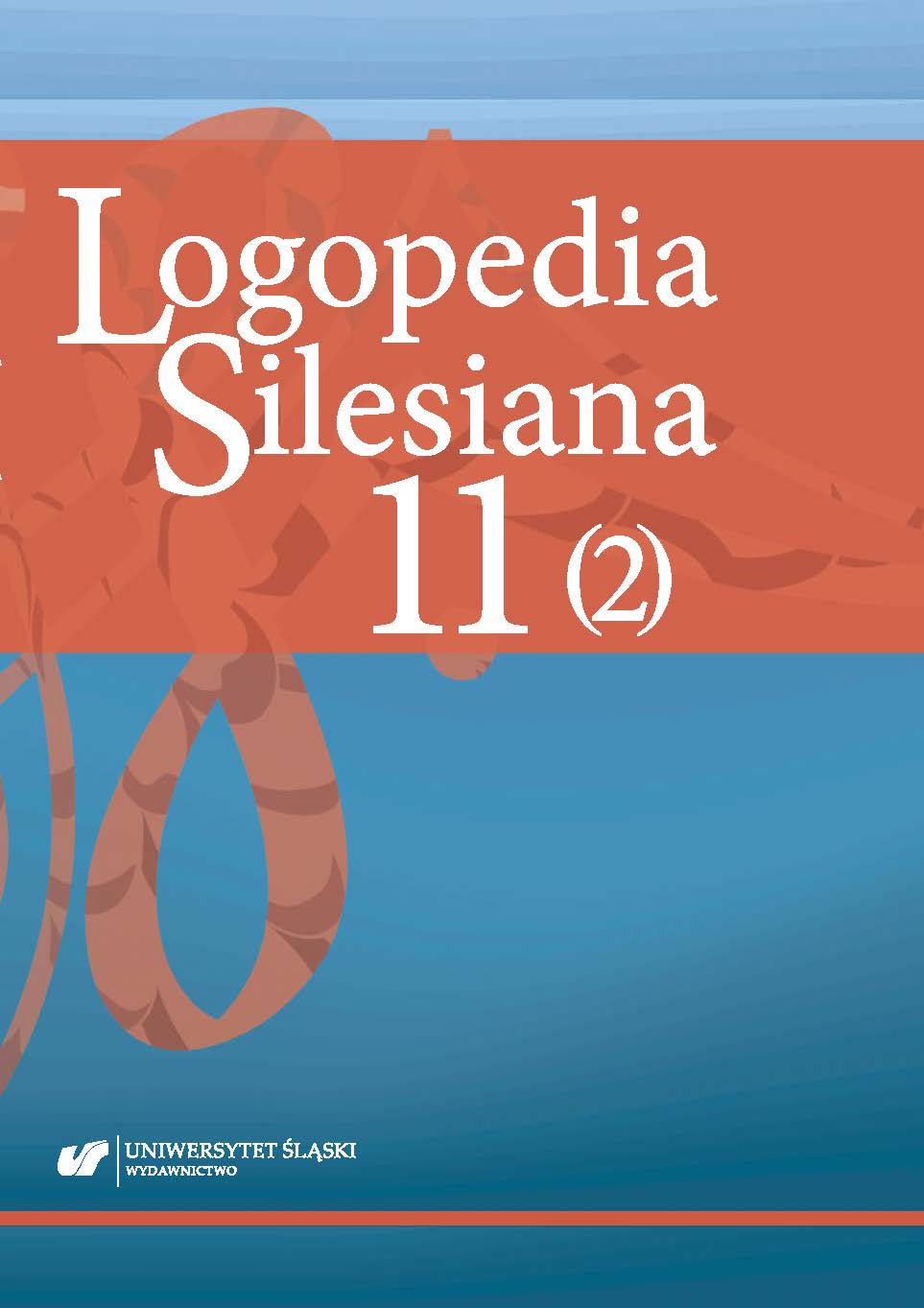Bartmiński, J. (1988). Definicja kognitywna jako narzędzie opisu konotacji. W: J. Bartmiński (red.), Konotacja (s. 169–183). Wydawnictwo Uniwersytetu Marii Curie-Skłodowskiej.
Google Scholar
Bartmiński, J. (1990). Punkt widzenia, perspektywa, językowy obraz świata. W: J. Bartmiński (red.), Językowy obraz świata (s. 109–127). Wydawnictwo Uniwersytetu Marii Curie-Skłodowskiej.
Google Scholar
Berlin, B., Kay, P. (1969). Basic color terms. Their universality and evolution. University of California Press.
Google Scholar
Buczkowska, J. (2004). Pojęcia i znaczenia. Kilka uwag na temat językoznawstwa kognitywnego. Studia Philosophiae Christianae, 40(2), 259–277.
Google Scholar
Chlewiński, Z. (1999). Umysł, dynamiczna organizacja pojęć. Analiza psychologiczna. Wydawnictwo Naukowe PWN.
Google Scholar
Czerwińska, K., Kucharczyk, I. (2019). Tyflopsychologia. Wydawnictwo Naukowe PWN.
Google Scholar
Doroszewski, W. (red.). Słownik języka polskiego PWN. (s.a.). https://sjp.pwn.pl/doroszewski/lista
Google Scholar
Dilling-Ostrowska, E. (1982). Rozwój i zaburzenia mowy u dzieci w zależności od stopnia dojrzałości układu nerwowego. W: J. Szumska (red.), Zaburzenia mowy u dzieci (s. 18–31). Państwowy Zakład Wydawnictw Lekarskich.
Google Scholar
Ginter, A. (2020). Metafory synestezyjne w opisach doznań zapachowych we współczesnym języku rosyjskim (na podstawie wpisów na blogach o tematyce perfumeryjnej). Linguodidactica, 24, 67–82.
Google Scholar
Grabias, S. (2016). Język w diagnozowaniu logopedycznym. W: E. Domagała-Zyś, A. Borowicz, R. Kołodziejczyk (red.), Język i wychowanie. Księga jubileuszowa z okazji 45-lecia pracy naukowej Profesor Kazimiery Krakowiak (s. 173–184). Wydawnictwo Katolickiego Uniwersytetu Lubelskiego.
Google Scholar
Grady, J. (1997). Foundations of meaning: Primary metaphors and primary scenes. University of California.
Google Scholar
Jakubowicz, M. (2017). Pochodzenie nazw barw w językach słowińskich. W: D. Filar, P. Krzyżanowski (red.), Barwy słów. Studia lingwistyczno-kulturowe (s. 211–227). Wydawnictwo Uniwersytetu Marii Curie-Skłodowskiej.
Google Scholar
Kaczorowska-Bray, K. (2014). Trudności w rozwoju komunikacji werbalnej i niewerbalnej dzieci niewidomych. W: A. Hamerlińska-Latecka, M. Karwowska (red.), Interdyscyplinarność w logopedii (s. 57–84). Komlogo.
Google Scholar
Kaczorowska-Bray, K., Milewski, S. (2020). Specyfika rozwoju umiejętności komunikacyjnych dzieci z uszkodzeniem narządu wzroku. W: K. Kaczorowska-Bray, S. Milewski (red.), Wczesna interwencja logopedyczna (s. 260–283). Harmonia Universalis.
Google Scholar
Kuczyńska-Kwapisz, J. (2004). Pedagogika osób słabo widzących i niewidomych. W: D. M. Piekut-Brodzka, J. Kuczyńska-Kwapisz (red.), Pedagogika specjalna dla pracowników socjalnych. (s. 88–103). Akademia Pedagogiki Specjalnej im. Marii Grzegorzewskiej.
Google Scholar
Lakoff, G., Johnson, M. (2010). Metafory w naszym życiu. Tłum. T. P. Krzeszowski. Aletheia.
Google Scholar
Langacker, R. (1991). Concept, image and symbol. The cognitive basis of grammar. Mouton de Gruyter.
Google Scholar
Maciejewska, A. (2021). Zmysłowe opisywanie świata. W: A. Maciejwska (red.), Narracja w diagnozie i terapii logopedycznej (s. 219–239). Wydawnictwo Naukowe Uniwersytetu Przyrodniczo-Humanistycznego.
Google Scholar
Majewski, T. (2002). Tyflopsychologia rozwojowa. Psychologia dzieci niewidomych i słabo widzących. Polski Związek Niewidomych.
Google Scholar
Mikołajczak-Matyja, N. (2008). Hierarchiczna struktura leksykonu umysłowego. Relacje semantyczne w leksykonie widzących i niewidomych użytkowników języka. Wydawnictwo Naukowe Uniwersytetu Adama Mickiewicza.
Google Scholar
Mikołajczak-Matyja, N. (2011). Definicje formułowane przez niewidomych i widzących jako przyczynek do rozważań nad zjawiskiem werbalizmu. Szkoła Specjalna, 5, 325–336.
Google Scholar
Milewski, S., Kaczorowska-Bray, K. (2015). Logopedyczne aspekty przyswajania języka przez dzieci niewidome. Poradnik Językowy, 5, 31–44.
Google Scholar
Niesporek-Szamburska, B. (2017). O zmyśle dotyku w komunikacji i języku dzieci i dorosłych. W: J. Wojciechowska, B. Kazek (red.), Zmysły w komunikacji. Mowa i jej uwarunkowania (s. 13–32). Harmonia Universalis.
Google Scholar
Nowakowska-Kempna, I. (1993). Definiowanie znaczenia wyrażeń w kognitywizmie. Wybrane zagadnienia. W: J. Bartmiński, R. Tokarski (red.), O definicjach o definiowaniu (s. 161–180). Wydawnictwo Uniwersytetu Marii Curie-Skłodowskiej.
Google Scholar
Pérez-Pereira, M. (2006). Language development in blind children. W: K. Brown (ed.), Encyclopedia of language and linguistics. Vol. 6 (s. 357–361). Elsevier.
Google Scholar
Prochowicz, A. (2013). Jak mówimy o śpiewaniu? Metafory synestezyjne jako element językowego obrazu śpiewu ludzkiego w polszczyźnie. Linguarum Silva, 2, 55–70.
Google Scholar
Przybyla, O. (2016). Procesy przetwarzania sensorycznego w stymulowaniu rozwoju małego dziecka. W: K. Kaczorowska-Bray, S. Milewski (red.), Wczesna interwencja logopedyczna (s. 100–117). Harmonia Universalis.
Google Scholar
Przybylska, R. (2002). Polisemia przyimków polskich w świetle semantyki kognitywnej. Universitas.
Google Scholar
Rogowska, A. (2002). U źródeł synestezji. Podstawy fizjologiczne i funkcjonalne. Przegląd Psychologiczny, 45(4), 465–474.
Google Scholar
Rosch, E. (1978). Principles of categorization. W: E. Rosch, B. Lloyd (eds.), Cognition and categorization (s. 27–48). Lawrence Erlbaum.
Google Scholar
Ramachandran, V. S. (2012). Neuronauka o podstawach człowieczeństwa. O czym mówi mózg? (A. Binder, M. Binder, E. Józefowicz, tłum.). Wydawnictwo Uniwersytetu Warszawskiego.
Google Scholar
Senderecka, M. (2006). Synestezja – od psychofizjologicznych badań do filozoficznych implikacji. W: Wszołek S., Janusz R. (red.), Wyzwania racjonalności. Wydawnictwo Apostolstwa Modlitwy.
Google Scholar
Sękowska, Z. (1982). Pedagogika specjalna. Zarys. Państwowe Wydawnictwo Naukowe.
Google Scholar
Sękowska, Z. (2001). Wprowadzenie do pedagogiki specjalnej. Akademia Pedagogiki Specjalnej im. Marii Grzegorzewskiej.
Google Scholar
Skrzypczak, W. (2008). Myśl ucieleśniona i myśl imaginacyjna. Wymiary obrazowania w języku i zasady porządkujące. Litteraria Copernicana, 2, 111–127.
Google Scholar
Smith, D. D. (2008). Pedagogika specjalna (A. Firkowska-Mankiewicz i G. Szums, red. nauk., J. A. Korbel, Z. S. Litwińska, M. E. Litwiński, tłum.). Wydawnictwo Naukowe PWN.
Google Scholar
Szela-Kędzia, J. (1998). Terapia logopedyczna dziecka niewidomego i słabowidzącego. Krakowska Szkoła Niewidomych.
Google Scholar
Taylor, R. J. (2001). Kategoryzacja w języku. Prototypy w teorii językoznawczej. (A. Skucińska, tłum.). Universitas.
Google Scholar
Tokarski, R. (2004). Semantyka barw we współczesnej polszczyźnie. Wydawnictwo Uniwersytetu Marii Curie-Skłodowskiej.
Google Scholar
Tołstoj, L. (1957). Niewidzący i mleko. W: Dzieła. Opowiadania. (C. Jastrzębiec, tłum.). Państwowy Instytut Wydawniczy.
Google Scholar
Walthers, R. (2007). Tyflopedagogika. (J. Mink, tłum.). Gdańskie Wydawnictwo Psychologiczne.
Google Scholar
Wierzbicka, A. (1990). The meaning of color terms: Semantics, culture and cognition. Cognitive Linguistics, 1(1), 99–15.
Google Scholar
Wiśniewska-Kin, M. (2007). „Chcieć, pragnąć, myśleć, wiedzieć” – rozumienie pojęć przez dzieci. Oficyna Wydawnicza „Impuls”.
Google Scholar
Zaręba, A. (1954). Nazwy barw w dialektach i historii języka polskiego. Ossolineum.
Google Scholar


 https://doi.org/10.31261/LOGOPEDIASILESIANA.2022.11.02.04
https://doi.org/10.31261/LOGOPEDIASILESIANA.2022.11.02.04

 10.31261/LOGOPEDIASILESIANA
10.31261/LOGOPEDIASILESIANA